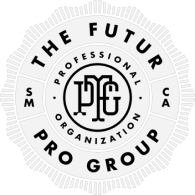In the ever-evolving landscape of the digital world, crafting web copy that captivates and converts is an art form worth mastering. Your website’s copy is more than just words on a screen; it’s a powerful tool that can empathize with users’ problems, convey your brand’s essence, and create real transformation. Let’s explore a few strategies that can transform your words into conversion-driven magic.
1. Understand Your Audience Inside Out
Effective web copy begins with a deep understanding of your target audience. Put yourself in their shoes—what are their pain points, desires, and motivations? Tailor your language, tone, and messaging to align with their needs. Speak their language, address their concerns, and offer solutions that resonate on a personal level.
2. Craft a Captivating Headline
Your headline is your virtual handshake with visitors. It needs to be attention-grabbing, concise, and relevant. People will only spend 1 second on a webpage before determining if they want to continue or not. Creating a strong headline should connect with the target audience type (so the user thinks “oh, that’s me,”), aligns with a problem or goal (“oh, that’s what I struggle with / want,”), and highlight your potential solution. Try to keep your headline or introduction no more than two sentences and evoke curiosity, making it tempting to learn more about how your product or service can improve their lives.
3. Embrace the Power of Storytelling
Stories have a unique ability to forge connections and engage emotions. Weave a compelling narrative that showcases real-life scenarios, challenges, and solutions. Share success stories, user testimonials, or personal anecdotes that demonstrate how your offering has made a positive impact.
4. Focus on Benefits, Not Just Features
While features provide information, it’s the benefits that truly resonate with readers. Highlight how your product or service addresses pain points, solves problems, and enhances their lives. Showcase the transformations your customers can experience and the tangible results they can achieve.
5. Create Scannable, Easy-to-Digest Content
In today’s fast-paced digital world, most readers skim through content. Make your copy scannable by using subheadings, bullet points, and short paragraphs. Instead of generic subheadings (like “About Us”), pack your story or information into that space (like “Helping small businesses since 1999.”) Use clear and concise language to convey your message efficiently. Break down complex concepts into digestible bites that keep readers engaged.
6. Use Persuasive Language and Calls to Action (CTAs)
Persuasion is a cornerstone of conversion-driven copy. Use persuasive language that encourages readers to take action. Incorporate strong verbs, active voice, and compelling adjectives. Your calls to action should be specific, action-oriented, and provide a clear direction for the reader—whether it’s signing up, purchasing, or exploring further. Buttons with the words “contact us” are more clear and direct than “Let’s go.”
7. Incorporate Social Proof
People are more likely to trust recommendations from their peers. Include social proof elements such as customer reviews, testimonials, and case studies. Authentic experiences from real customers build credibility and instill confidence in your offering.
8. A/B Test and Iterate
The art of creating compelling web copy is an ongoing process of refinement. Utilize A/B testing to experiment with different copy variations, headlines, and CTAs. Analyze the data to see what resonates most with your audience and iterate based on the results.
Crafting web copy that converts is a blend of empathy, creativity, and strategy. By understanding your audience, crafting captivating headlines, weaving compelling stories, and using persuasive language, you can create an online presence that not only engages but also converts visitors into loyal customers. Remember, every word has the potential to inspire action, so approach your web copy with intention, and watch your conversion rates soar.


